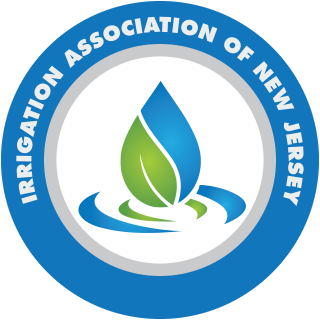Backflow defined; prevention a key
By Jeff Keim
Reprinted from the July 1999 issue of Landscape & Irrigation
Backflow simply means the reversal of the normal flow of water in a plumbing system. Backflow becomes a problem only when non-potable fluids or substances can be drawn back into potable (drinking water) lines from an unprotected cross-connection. The two ways backflow can occur are through back-siphonage or back-pressure backflow.
When water pressure in a potable water main line is lost for any reason, all the fluids in all of the potable and non-potable service lines connected to the main line will be effectively pulled or back-siphoned out of those lines and back into the main line, unless effective backflow preventive measures have been taken on those lines.
In contrast, back-pressure backflow occurs whenever the water pressure in a service line is higher than that of the main line. The fluid in the service line will be forced back, or back-pressured, back into the line.
Some examples of the potentially hazardous fluids that could be drawn back into the mains would include irrigation sprinkler water contaminated with bacteria, heavy metal-laden fire sprinkler system water, rust inhibitor-laced boiler water and even goldfish-contaminated pond water. And the odds are that some of these contaminants will remain in the drinking water (and will therefore be consumed by water users) once water pressure is restored to normal. Backflow specialists typically distinguish between cross-connections that are "high hazard" and "low hazard." High-hazard situations are ones where backflow could cause sickness or death. Low-hazard situations refer to issues of water quality such as odor or taste only where no injury due to pollution is possible (see chart).
Irrigation sprinkler systems are designated as high-hazard cross-connections due to the common presence of bacteria. Health hazards often found in these lines include pesticides, fertilizers and herbicides. Indeed, chemigation directly feeds such chemicals into these systems. And this highlights a serious problem in the irrigation industry.
The use of a low-hazard Double-Check Assembly (DCA) on irrigation lines, though common in some parts of the country, is dangerous and inappropriate. The DCA has no means of preventing backflow should both spring-loaded check assemblies in the unit be held open with rocks or debris. In fact, DCAs in an irrigation system application would probably prove legally indefensible should a backflow incident occur.
Having argued for the exclusion of DCAs from irrigation systems, let’s now examine some more appropriate assemblies, starting with the Atmospheric Vacuum Breaker (AVB) and the Pressure Vacuum Breaker (PVB).
The AVB is a high-hazard device but is seldom suitable for irrigation systems on commercial properties, since it lacks test cocks and cannot be tested annually by a backflow tester (as is required by most states and local codes).
The PVB is a decidedly superior assembly over the AVB because (a) it’s a testable assembly, (b) its air inlet float is spring-assisted and (c) it has a small spring-loaded check assembly, which is a nice little touch.
Both AVBs and PVBs have an air inlet float designed to open the unit to the atmosphere when line pressure is lost. This opening of the valve to the air breaks any vacuum that could allow back-siphonage to occur. As the chart clearly shows, however, neither assembly can be used where the irrigation system can be back-pressured. (That’s because the all-important air inlet float assembly is just not going to open if pressurized from either direction.)
Back-pressure on an irrigation system commonly occurs in three principle ways: (a) from a pump on the system; (b) from gravity, as when part or all of the system is at a higher elevation than that of the vacuum breaker itself (beware of hills, raised planter beds, etc.); or (c) from the system being supplied by two or more incoming water lines (in such a looped system, each supply line back-pressures all of the other backflow assemblies). If any of your customers has AVB- or PVB-protected sprinkler systems with characteristics like these, an immediate conversion of vacuum breakers to RP assemblies (see below) is needed to safeguard the drinking water because the vacuum breaker air inlet valves have been rendered inoperative in these systems.
The air gap method of backflow protection is basically a physical gap in the plumbing system so that there is no actual contact between the potable and non-potable fluids. This is a great idea in theory, but of only limited actual applications, since all line pressure is lost at the air gap, and the last thing your customers want is to add a pump.
For this reason, the last item on the chart—the Reduced Pressure Principle Assembly (RPA)—is the recognized workhorse of the industry for both domestic and irrigation lines. The RPA is a testable unit consisting of two spring-loaded check valves (similar to DCAs), but also containing a relief valve assembly to vent water whenever it senses either back-siphonage or back-pressure. The RPA should be used whenever back-pressure backflow is possible.
Of course, RPs tend to vent water for reasons other than just backflow pressure. Rocks or dirt in the first check valve or rapidly fluctuating line pressures are the most common reasons for such venting of water. So, properly installing, testing, repairing and/or troubleshooting such assemblies would be a great subject for another article.
